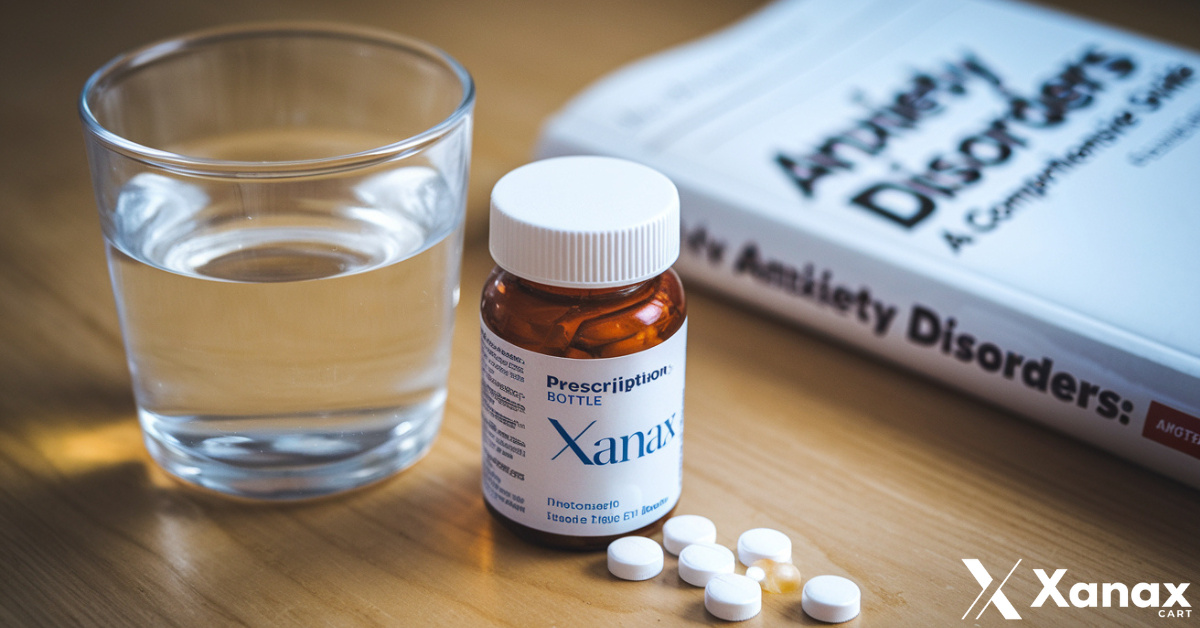Anxiety disorders represent a significant portion of mental health diagnoses worldwide, affecting millions each year. They are characterized by excessive fear, worry, and various physical symptoms, making everyday tasks daunting.
Managing these disorders often involves a combination of therapy and medication. Among the medications commonly prescribed is Xanax, a name frequently mentioned in discussions about anxiety treatment.
But what makes Xanax a go-to option for some? And importantly, what should one consider before starting treatment?
This article delves into whether Xanax can truly help manage anxiety disorders and what patients should consider.
What is Anxiety Disorder?
Anxiety disorders encompass a range of conditions marked by extreme fear and worry.
These include generalized anxiety disorder (GAD), panic disorder, and social anxiety disorder, among others. Symptoms might range from heart palpitations and sweating to feelings of unrest and rapid breathing.
Diagnosing such disorders requires a detailed evaluation of symptoms, often using criteria outlined in diagnostic manuals like the DSM-5.
Note: Dealing with long term anxiety disorders, depression, and panic attacks then you can buy Xanax without Prescription from Xanaxcart.
Treatment Options for Anxiety
While therapy, especially cognitive behavioral therapy (CBT), plays a crucial role in managing anxiety, medications can also be pivotal. They work by altering brain chemistry to reduce symptoms and improve quality of life.
However, choosing the right treatment is crucial and should be done under professional guidance to ensure it addresses the patient’s specific needs.
Xanax as a Treatment for Anxiety Disorders
Xanax, whose generic name is alprazolam, is part of the benzodiazepine family of drugs. It’s known for its quick-acting relief of anxiety symptoms, functioning by enhancing the effects of GABA, a neurotransmitter that promotes calmness in the nervous system.
The Benefits of Xanax for Anxiety
For many, Xanax is a lifesaver, swiftly diminishing the overwhelming sensations of anxiety. Compared to other anti-anxiety medications, Xanax acts quickly, which is why it is often prescribed for acute bouts of anxiety, such as those found in panic attacks.
Potential Side Effects and Risks
While effective, Xanax is not without risks. It can cause side effects ranging from drowsiness to more serious issues like dependency. The risk of withdrawal symptoms makes it crucial for it to be managed carefully, under strict medical supervision.
Guidelines for Safe Use
Using Xanax safely involves adhering to prescribed dosages and not extending use beyond the recommended duration. Regular consultations with a healthcare provider are essential to monitor its effects and adjust as needed.
Alternative Treatments and Supports
For those wary of medication, options such as therapy, stress management techniques, and lifestyle modifications can also provide significant relief. These methods can be effective on their own or in combination with medications like Xanax.
Combining Treatments for Best Results
Ideally, treatment for anxiety should be holistic, combining medication with psychotherapy and other approaches. This integrated strategy often yields the best outcomes, tailored to the individual’s specific situation and needs.
Questions to Ask Your Healthcare Provider
Before starting any treatment, discussing all options with your healthcare provider is vital. Questions might include the expected duration of treatment, possible side effects, and how to know if the treatment works.
Planning Your Treatment Path
Finally, planning your treatment path should involve regular reviews and adjustments to ensure that the approach remains effective and safe over time.
Conclusion
Xanax can be an effective component of anxiety disorder treatment for some individuals, but it’s not suitable for everyone. Understanding the benefits and risks, considering alternatives, and closely working with a healthcare provider are crucial steps in managing anxiety disorders effectively.
Frequently Asked Questions?
How quickly does Xanax work for anxiety?
Xanax works relatively quickly compared to other anti-anxiety medications, typically starting to relieve symptoms within 30 minutes to an hour.
This rapid action makes it particularly useful for acute anxiety episodes, such as panic attacks.
Can I use Xanax for long-term anxiety management?
Xanax is generally prescribed for short-term use due to the risk of dependency and tolerance. Long-term use is usually not recommended, and if needed, it should be under strict medical supervision with regular evaluations.
What are the main risks of using Xanax for anxiety?
The main risks include dependency, tolerance (needing more of the drug to achieve the same effect), and withdrawal symptoms upon discontinuation.
Other side effects can include drowsiness, confusion, and impaired coordination.
Are there any natural alternatives to Xanax that are effective?
Yes, some natural alternatives may help manage anxiety, such as herbal supplements like valerian root or chamomile.
Lifestyle changes, such as increased physical activity, meditation, and mindfulness practices, are also effective for some people.
However, consulting with a healthcare provider before starting any natural treatments is important.
How do I know if Xanax is the right medication for my anxiety?
Determining if Xanax is right for you should involve a thorough evaluation by a healthcare provider. They will consider your symptoms, medical history, other medications, and potential risks before prescribing Xanax.
It’s crucial to follow their guidance and have open communication about how the medication is affecting you.


0 Comments